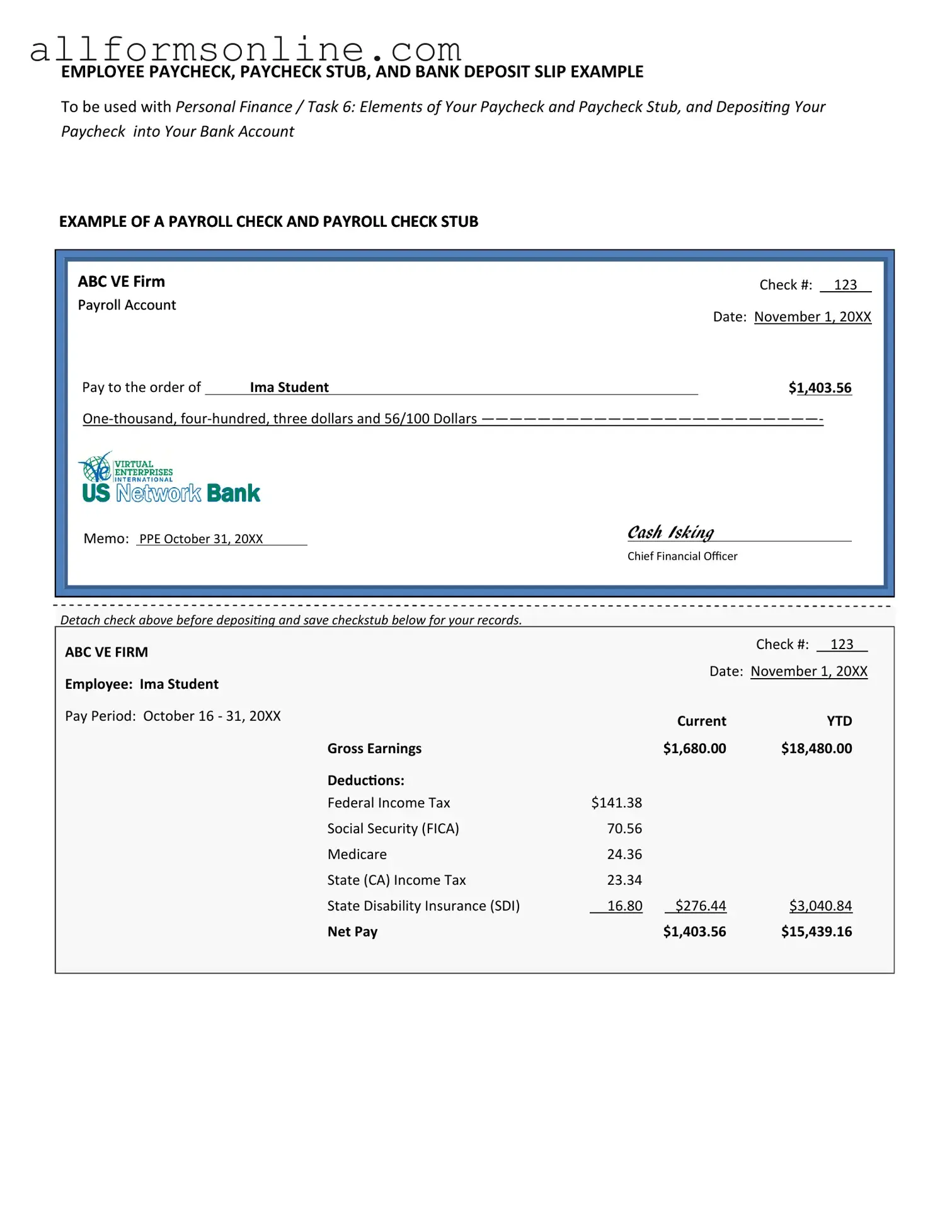What is a Payroll Check form?
A Payroll Check form is a document used by employers to authorize the payment of wages to employees. It typically includes details such as the employee's name, the amount of pay, the pay period, and the employer's information. This form ensures that employees receive their compensation accurately and on time.
Who needs to fill out the Payroll Check form?
Employers or payroll administrators are responsible for filling out the Payroll Check form. It is essential for any business that compensates employees through checks. Employees do not fill out this form; however, they should provide accurate information for payroll processing.
What information is required on the Payroll Check form?
The Payroll Check form typically requires the employee's full name, Social Security number, pay period dates, gross pay, deductions, and net pay. Additionally, the employer's name and address, as well as the date of payment, should be included to ensure clarity and compliance with tax regulations.
How often should Payroll Check forms be submitted?
The frequency of submitting Payroll Check forms depends on the employer's payroll schedule. Many businesses operate on a weekly, biweekly, or monthly basis. Employers should establish a consistent schedule to ensure timely payments and compliance with labor laws.
What should I do if I notice an error on my Payroll Check form?
If an error is identified on the Payroll Check form, the employee should notify their employer or payroll department immediately. Corrections may involve issuing a new check or adjusting the payroll records to reflect the accurate information. Prompt action is crucial to avoid delays in payment.
Can Payroll Check forms be submitted electronically?
Yes, many companies now allow Payroll Check forms to be submitted electronically. This process often streamlines payroll operations and enhances efficiency. Employers should ensure that electronic submissions comply with applicable laws and maintain proper security measures to protect sensitive information.
What happens if a Payroll Check is lost or stolen?
If a Payroll Check is lost or stolen, the employee should report the incident to their employer immediately. The employer may then place a stop payment on the check and issue a replacement. It is important for employees to act quickly to avoid potential financial loss.
Are Payroll Check forms required for independent contractors?
Payroll Check forms are generally not required for independent contractors. Instead, businesses typically issue 1099 forms at the end of the tax year to report payments made to contractors. However, it is essential to maintain accurate records of payments made to comply with tax regulations.
How long should Payroll Check forms be kept on file?
Employers should retain Payroll Check forms for a minimum of three years, in accordance with IRS guidelines. Keeping these records helps ensure compliance with tax laws and provides documentation in case of audits or disputes regarding employee compensation.
What should I do if I have more questions about the Payroll Check form?
If additional questions arise regarding the Payroll Check form, employees should reach out to their employer's human resources or payroll department. They can provide specific guidance and clarify any concerns related to payroll processing and compensation.
